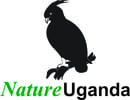Safeguarding Murchison Falls Delta Amidst Oil Exploration and Ecological Challenges

From July 16th to 19th, 2024, the NatureUganda research team conducted a reconnaissance visit to the Murchison Falls Delta Ramsar Site. With over 20 years of monitoring the site using birds as biodiversity indicators. The Executive Director of NatureUganda, Mr. Achilles Byaruhanga, proudly notes, “We have the longest data series of the site.” However, recent oil exploration activities by Total Energies Uganda (TEPU) have impacted some areas of the Ramsar site, raising concerns about its current and future status.
Total Energies Uganda operates in the Albertine Graben, a region of high biodiversity, under the Tilenga Project. This project covers the Murchison Falls National Park, savanna areas, key wetlands, and the Budongo-Bugoma Forest Corridor. In line with International Finance Corporation Performance Standard 6 requirements, TEPU developed its Net Gain Implementation Plan (NGIP) to achieve biodiversity net gain by 2045. The NGIP focuses on restoring and managing wetland habitats, improving freshwater quality along the River Nile and Lake Albert shorelines, and preserving both ecological and socio-economic values of the wetlands.
This wetland system extends from the top of Murchison Falls, where the Nile flows through a narrow rock cleft, to the delta at its confluence with Lake Albert. This area, part of the Albert Nile, includes over 50 tributaries flowing through thick papyrus swamps towards the lake. The site is vital for water birds such as the Shoebill, Pelicans, Darters, and various heron species, especially at the delta point entering Lake Albert. Additionally, it serves as a crucial spawning ground for Lake Albert fisheries and supports biodiversity during dry seasons. The wetland system is also of social and cultural importance to local communities, contributing to crop farming, fishing, tourism, and recreation.
Like many protected areas, the Murchison Falls-Albert Delta Wetland System faces numerous challenges. These include human-wildlife conflicts, poaching, commercial and subsistence hunting of bushmeat, and encroachment due to unknown boundaries for subsistence agriculture. The rising human population exacerbates these issues. According to Uganda’s National Environment Act Cap 153, permits for the use of wetland resources are issued by the National Environment Management Authority (NEMA). These permits are granted based on an assessment of the proposed activity’s potential impact on the environment and the sustainability of wetland use. Many small-scale farmers, lacking permits to use the wetlands, are considered encroachers and face potential eviction by the government, threatening their food security and livelihoods. Without permits, these communities have little incentive to invest in sustainable management practices to reduce wetland degradation and mitigate climate change impacts.
The recent visit revealed signs of encroachment and degradation. Approximately 2-3 kilometers of the wetland have been lost, and the reasons remain unknown, necessitating further investigation. The Ramsar site’s status is now in question. Conservation efforts must shift to prioritize people, as noted by the team: “Conservation is now for the people; it is no longer conservation for conservation.” The visit highlighted severe encroachment, invasive species proliferation, and pollution due to poor waste disposal.
To ensure the sustainability of the Murchison Falls-Albert Delta Wetland System, it is crucial to establish a common understanding and agreement on the Ramsar boundaries, ecological structure, and management, use, and restoration plans. The NatureUganda team plans to conduct detailed assessments and develop activities to guide the restoration and conservation of the site. Collaborative efforts with stakeholders, including local government, local communities and TEPU, are essential to address the challenges and achieve the long-term conservation goals.
NatureUganda remains committed to protecting this vital wetland system, ensuring its ecological integrity and the well-being of the communities that depend on it.
Related Posts
Recent Posts
NatureUganda hosts nature walk to promote conservation and tourism in Bugoma CFR
Site Profiling of Mabamba Bay and Musambwa Islands: Opportunities for Biodiversity Conservation and Climate Resilience
Greater Painted-snipe – When Females Take the Lead
All Categories
- Conservation and Development (35)
- Eco-tourism (6)
- Education and Awareness (14)
- Forests (12)
- Gorvenance (1)
- Habitats (13)
- membership (2)
- Nature walk (3)
- People (10)
- Projects (13)
- Public dialogue (9)
- Research and Monitoring (22)
- Sites (6)
- Species (13)
- Wetlands (15)
- Wildlife (10)




